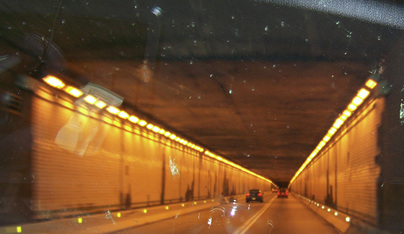Somerset, PA

Somerset (pronounced /ˈsʌmərsɛt/) is a borough in Somerset County, Pennsylvania, United States. The population was 6,762 at the 2000 census. It is the county seat of Somerset County.[1] The Somerset Wind Farm is 3 miles (5 km) to the east. Somerset is just off Exit 110 of the Pennsylvania Turnpike (I-70 and I-76) and is a popular stopover place for travelers between Southwestern Ontario and American Midwest and Northeast Corridor.[citation needed]
Somerset has the ninth-highest elevation of towns in Pennsylvania, at 2,190 feet (670 m) above sea level.[3]
History / Notable events
Somerset has the ninth-highest elevation of towns in Pennsylvania, at 2,190 feet (670 m) above sea level.[3]
History / Notable events
- Somerset was a central stage for the Whiskey Rebellion of 1794. Several rebellion leaders, including Harmon Husbund, lived in Somerset. The federal militia sent to put down the rebellion worked from its headquarters in the nearby town of Berlin. The Whiskey Rebellion was the first severe test of the federal authority under the newly adopted U.S. Constitution and under President George Washington.
- On September 11, 2001, United Airlines Flight 93, bound from Newark, New Jersey, to San Francisco and one of the four planes hijacked that day by al-Qaeda operatives, crashed near Somerset in Shanksville, killing all 45 persons on board. It is believed that hijackers intended to fly this plane into the White House or the U.S. Capitol.
- In July 2002, nine miners were trapped for 77 hours, 240 feet (73 m) underground, by flooding in the Quecreek coal mine, just outside of Somerset. All nine miners were rescued. The Quecreek Mine Rescue was chronicled by journalists from around the world and was televised globally.
- Somerset Crater on Mars is named after Somerset.
Allegheny Mountain Tunnel

Allegheny Mountain Tunnel From Wikipedia, the free encyclopedia
The tunnel’s western entrance Overview Location Somerset County, Pennsylvania Route Pennsylvania Turnpike (Interstates 70 and 76) Operation Opened 1940 (present-day westbound tube); 1965 (present-day eastbound tube) Technical Construction 1939 Length 6,070 feet (1,850 m) No. of lanes 4 (two in each direction) Highest elevation 2,314 feet (705 m) Eastern entrance to the tunnel The Allegheny Mountain Tunnel is a vehicular tunnel carrying the Pennsylvania Turnpike through the Allegheny Mountains. At this point, the Turnpike carries Interstates 70 and 76. The original Allegheny Mountain Tunnel was built in the late 19th century for the South Pennsylvania Railroad, which was never completed. This tunnel was not used due to concerns about its structural integrity.
The eastern end of this original tunnel can be seen by parking on the service road at the turnpike's eastern portal and walking up to the area just above and a bit north of the turnpike portal. The opening is visible in the rocks just uphill. Entering this old tunnel is not recommended.[1]
The current westbound tunnel was built in 1939 as part of the original construction for the highway. At first, this tunnel served both westbound and eastbound traffic with a single lane in each direction. The eastbound tunnel was completed in 1965 as part of an expansion and upgrade of the turnpike due to increased traffic volume. Both tunnels are approximately 6,070 feet (1,850 m) in length.[2] Explosives and other hazardous materials are not allowed in the tunnels. Vehicles carrying these materials must exit before the tunnel and take other roads around the tunnel. Restrictions on some hazardous materials in non-bulk form have been lifted.[3]
Long term plans call for major maintenance to be performed on the tunnels; however, this presents a major problem for traffic.[4] Terrible backups prompted officials to build the second tube. With today's traffic volumes, it would not be feasible to close one tube and route all traffic through the other. Possible plans include building a third (and possibly a fourth) tunnel, as well as bypassing the tunnels completely as was done for the Rays Hill and Sideling Hill Tunnels.
The tunnel’s western entrance Overview Location Somerset County, Pennsylvania Route Pennsylvania Turnpike (Interstates 70 and 76) Operation Opened 1940 (present-day westbound tube); 1965 (present-day eastbound tube) Technical Construction 1939 Length 6,070 feet (1,850 m) No. of lanes 4 (two in each direction) Highest elevation 2,314 feet (705 m) Eastern entrance to the tunnel The Allegheny Mountain Tunnel is a vehicular tunnel carrying the Pennsylvania Turnpike through the Allegheny Mountains. At this point, the Turnpike carries Interstates 70 and 76. The original Allegheny Mountain Tunnel was built in the late 19th century for the South Pennsylvania Railroad, which was never completed. This tunnel was not used due to concerns about its structural integrity.
The eastern end of this original tunnel can be seen by parking on the service road at the turnpike's eastern portal and walking up to the area just above and a bit north of the turnpike portal. The opening is visible in the rocks just uphill. Entering this old tunnel is not recommended.[1]
The current westbound tunnel was built in 1939 as part of the original construction for the highway. At first, this tunnel served both westbound and eastbound traffic with a single lane in each direction. The eastbound tunnel was completed in 1965 as part of an expansion and upgrade of the turnpike due to increased traffic volume. Both tunnels are approximately 6,070 feet (1,850 m) in length.[2] Explosives and other hazardous materials are not allowed in the tunnels. Vehicles carrying these materials must exit before the tunnel and take other roads around the tunnel. Restrictions on some hazardous materials in non-bulk form have been lifted.[3]
Long term plans call for major maintenance to be performed on the tunnels; however, this presents a major problem for traffic.[4] Terrible backups prompted officials to build the second tube. With today's traffic volumes, it would not be feasible to close one tube and route all traffic through the other. Possible plans include building a third (and possibly a fourth) tunnel, as well as bypassing the tunnels completely as was done for the Rays Hill and Sideling Hill Tunnels.